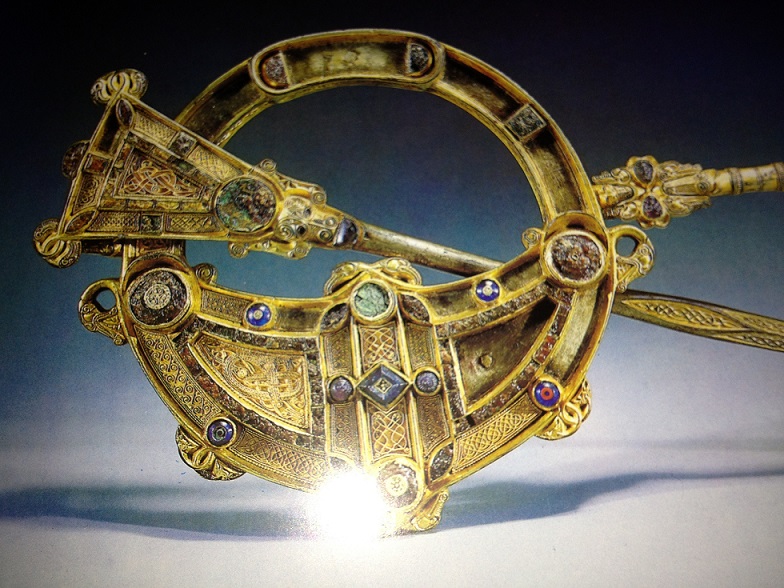Christanity had by now had a prefound effect on the Irish people in general. The traditional class had their intellectual horizons greatly widened, one of the chief results was of which was the early experance of a secular vernacular literature which is one of the oldest in Europe. The Christian church now brought about gradual changes in the law while the development of monastries modified polictal and strategical thinking. The founding of major religious houses often on marginal land brought about an expansion of the areas under cultivation. Work and particularly artistic activity was now given a new purpose by linking it to religious practice.
Stone churches were built in the missionaries while wooden churches were the norm everywhere else. Some of the surviving early church buildings are simple adaptations of building methods employed on secular sites, An example would be the small oratory of Gallarus, Co. Kerry which is like an upturned boat made of dry stone wall.
Metal work in the earlier part of the Christian period is not very well documented. Aseries of bronze hanging boalsor lamps is known to be in Britain. It has been said that these bowls which were found in the 6th and 7th centuries on Pagan Saxon graves were booty from the Celtic lands [Ireland].
A small number of early manuscripts survives in the form of ogham script, they had appeared in Ireland well before Christianity, orgham was used for memorial inscriptions and in form consisting of groups of notches cut along the edge of a stone - represents a native response to influences from Latan civilisation. It had a very limited alphabet. This was the writing used in the 7th century by some.
Sometimes there was a substitution of silver for bronze in the making of ornaments along with the adoption of glass and arranged in a decorative pattern [ Platelets cut from bundles of fused glass rods]. The famous Ballinderry Brooch was made at this time and shows that Irishmen were acquiring new skills.
Much of the metalwork of the time was made in the service of the church where the craftsmen were also clerics. Most of this work was accomplished in monasteries. The first personal ornament with reliable of date is the great ring brooch called ''The Tara Brooch'' which is 9 cm in diameter. On this brooch there are a raft of artistic influences, the Amber on the brooch may be from England, the Mercury used was most likely imported from the Baltic and the Silver was must likely from overseas. The source of the gold could be from anywhere. The shape of the brooch is pseudo-penannular and was a very popular form in Ireland in the 8th and 9th centuries
